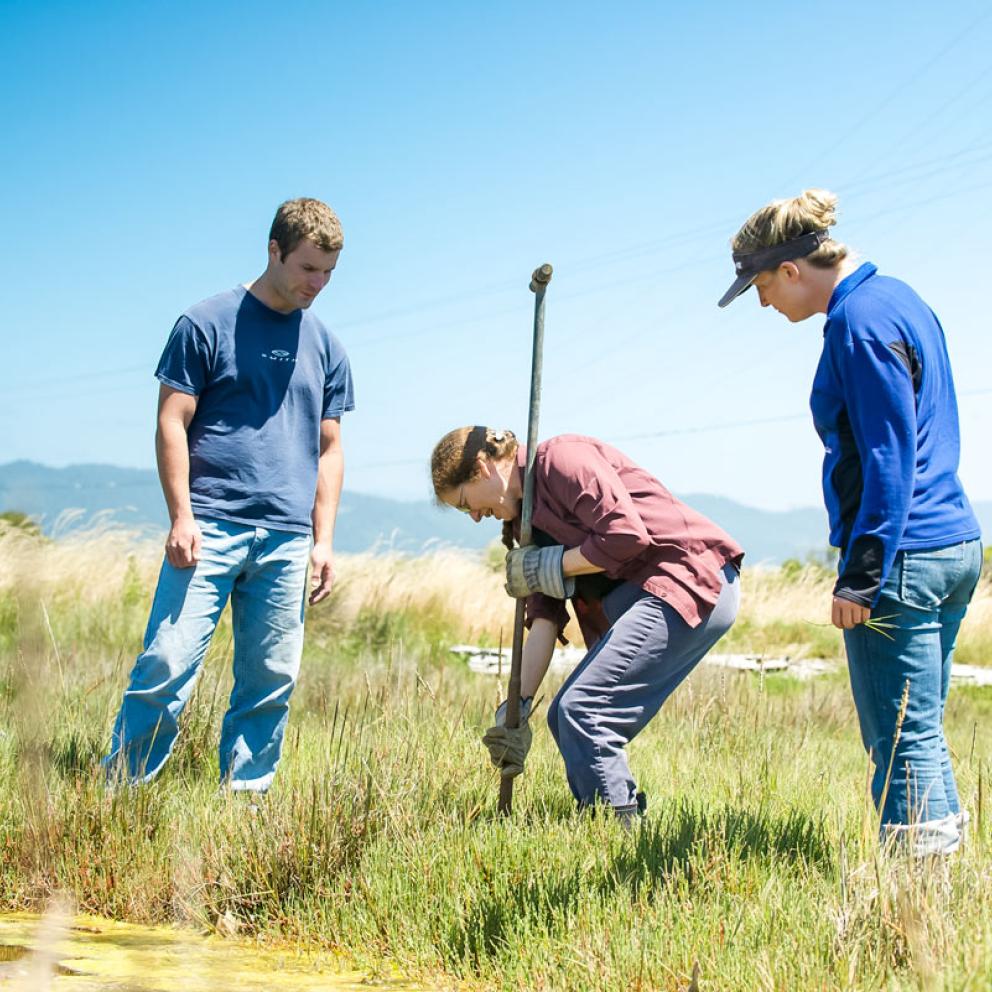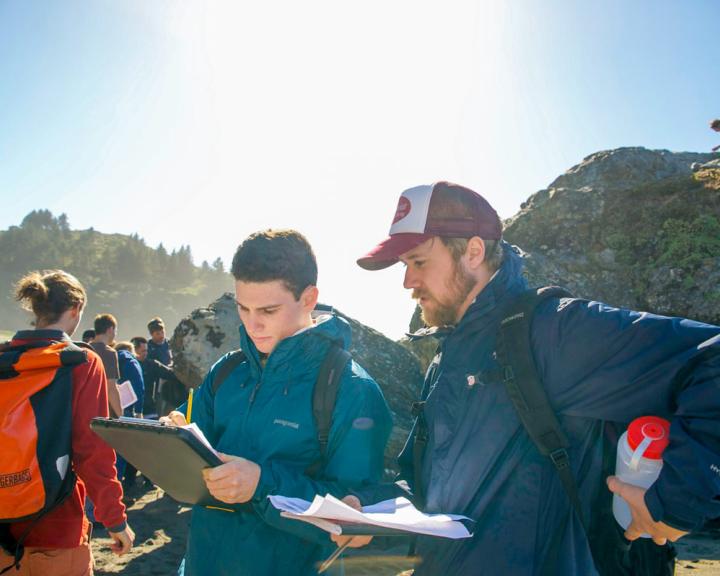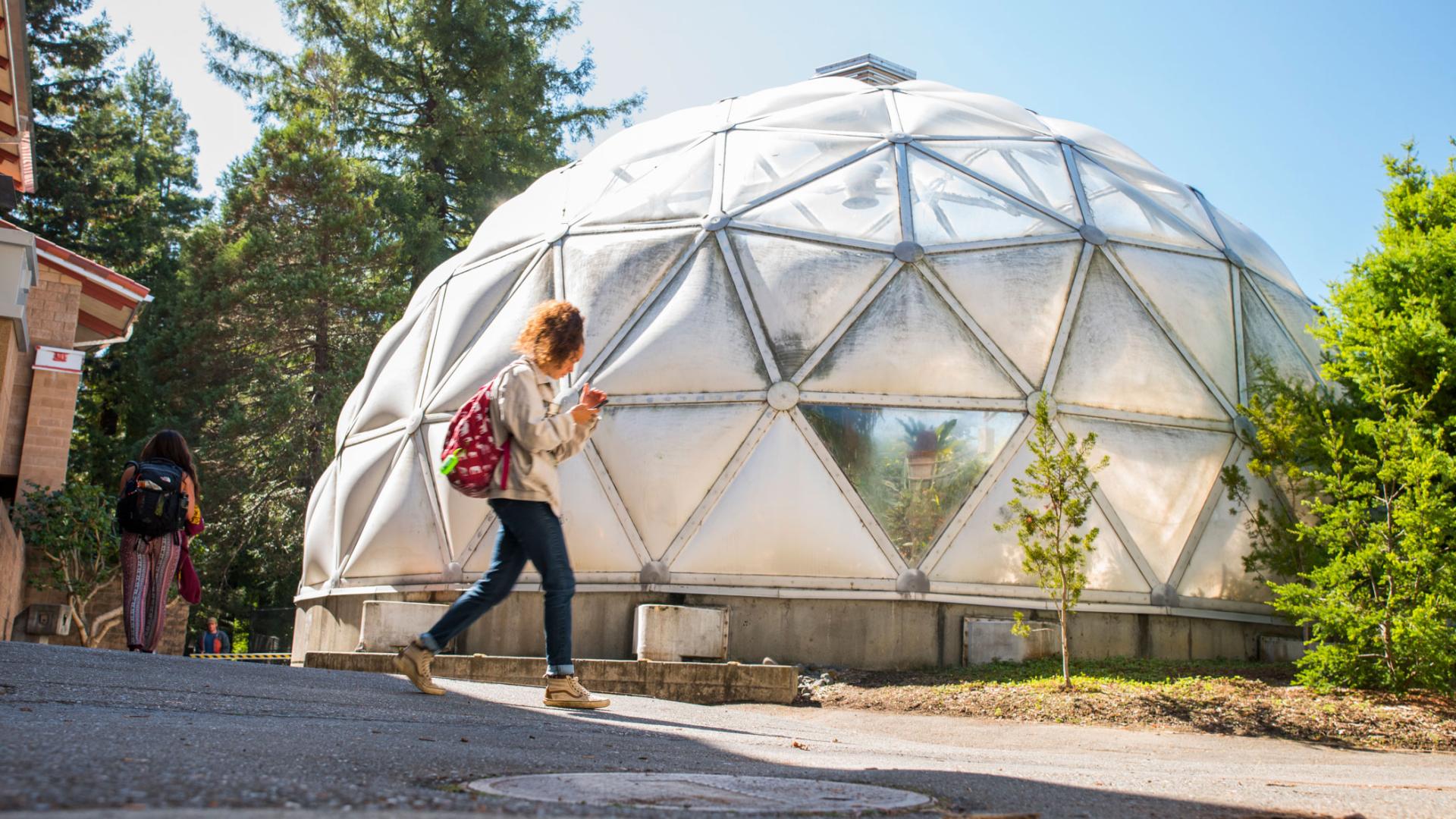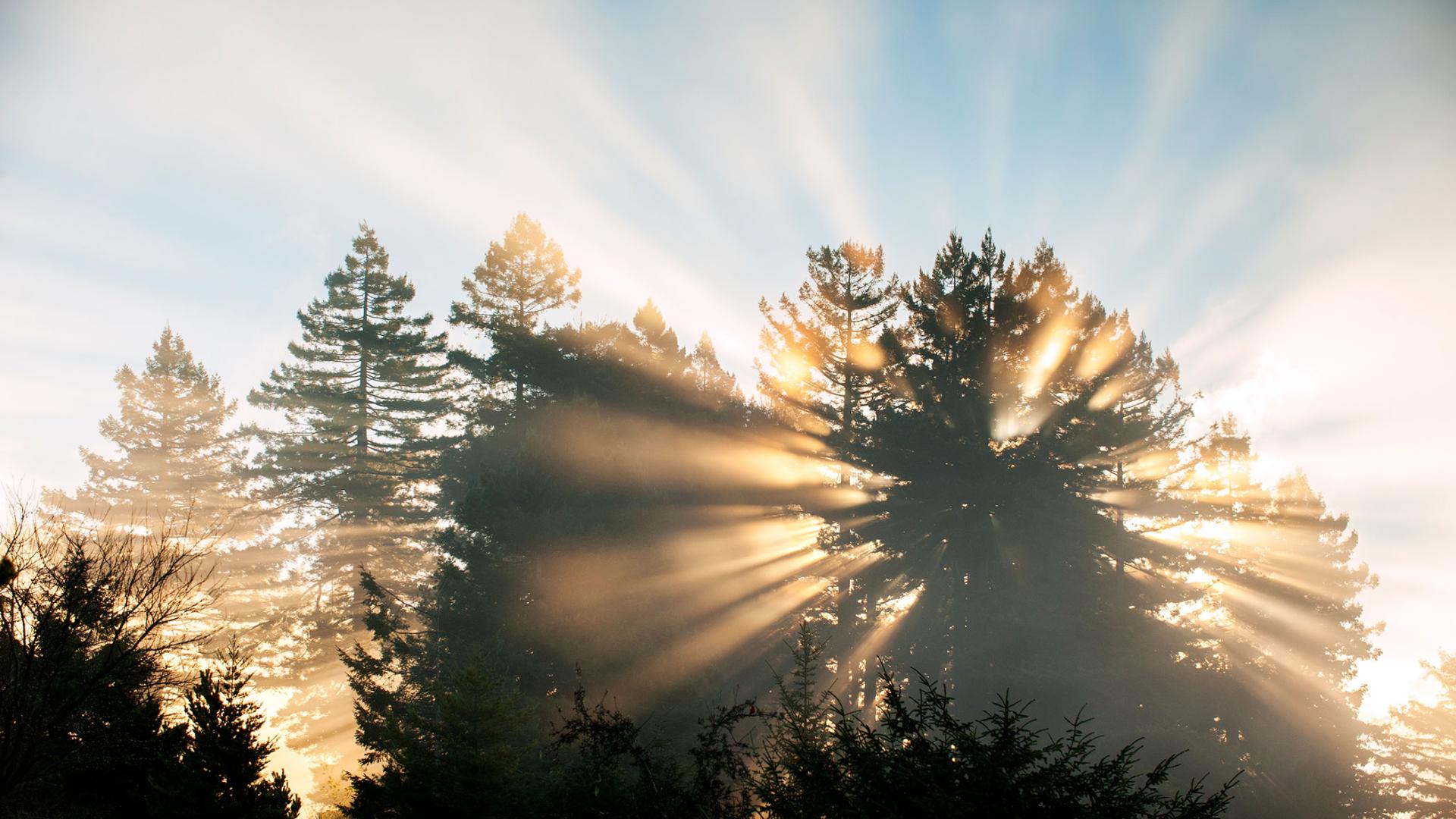Breadcrumb
Department of Geology
Humboldt Geology students learn the field, lab, and scientific reasoning skills needed to understand and mitigate a variety of geological and environmental challenges. Our location near the Mendocino triple junction and the Klamath and Cascade mountains provides unique opportunities to study active geological processes like tectonics, volcanoes, glaciers and climate change, and rivers in an inclusive and fun learning environment.
Humboldt Geology trains world class geoscientists to solve tomorrow's problems, and have fun doing it!
Program Overview
Our geology program offers a Bachelor of Science or Bachelor of Arts degree, giving you the flexibility to pursue the education—and career—that you want. Studying our physical landscapes and the processes that form them gives you an understanding of our planet’s most pressing problems, and how to remedy them.
Geology B.S.
The BS degree is a comprehensive degree designed to prepare students for professional careers in the geological sciences, like geotechnical and environmental consulting, engineering geology, natural resource geology, or research.
Geology–Geosciences concentration B.A.
The B.A. degree is designed for students who desire an education that combines a strong geological background with another field of study, including (but not limited to) geospatial analysis, environmental science, education, or business.
Graduate Program
Our graduate program is a Master of Science degree in Environmental Systems—Geology Concentration which is offered under the Environmental Systems Graduate Program in the College of Natural Resources and Sciences.
Geology Minor
Where You Learn
Humboldt is a spectacular place—our redwood forests, beaches, rivers, mountains, and marshes are full of life, precisely because of the complex geology of this region.
Cal Poly Humboldt is located along the active Cascadia subduction zone and near the Klamath Mountains and south Cascades volcanic arc. You will immediately take geology courses participating in laboratory sections and weekends in the field, collecting data and making observations. Examples of field trips include visits to the Arcata Marsh to core for records of past earthquakes and tsunami, Big Lagoon to measure coastal erosion, Lassen Volcanic National Park to observe recent volcanic eruptive material, Trinidad State Beach to piece together a complicated rock record of subduction, and Jacoby Creek to measure creek discharge with respect to watershed health.

Personal Attention
Humboldt’s geology professors are dedicated to their fields and their students. They work on diverse projects regionally, including paleoseismology in Humboldt County, past volcanic eruptions in the Cascade and Aleutian Arcs, tectonics of the Klamath and Appalachian mountains, and glacial geology in the Trinity Alps. All majors have the opportunity to conduct a senior thesis project, partner with a faculty mentor, and get involved in their research program.
Our Stars to Rocks learning community gives you an immediate connection, creating a community of faculty and peers from day one. Our small class sizes let you work one-on-one with professors, who provide mentorship and opportunities for hands-on learning.

After Graduation
Our alumni work in environmental consulting, geotechnical engineering, public safety, emergency management, water resources, science communication, and education. They are hired by the US Geological Survey, California Geological Survey, Bureau of Land Management, National Park Service, Caltrans, US Forest Service, the Bureau of Reclamation, and many smaller, private firms specializing in environmental remediation, consulting, and engineering.
Thinking about graduate school? Our Geology B.S. degree includes all of the math and science courses that are prerequisites for M.S. and Ph.D. degrees for geoscience programs in the United States and abroad. Recent graduates have gone on to complete graduate degrees at University of Nevada Reno, University of Montana, University of Idaho, University of Melbourne, and the University of Michigan.
With a solid foundation in field skills, geological reasoning skills, and a strong sense of identity and community as a geoscientist, earning a degree from Humboldt Geology will set you up for a rewarding career as a geoscientist.

First Year Learning Community
Imagine being on a hilltop observatory peering up at the stars, searching for clues about the nature of gravity, analyzing river water samples, or taking a field trip to study the Mendocino triple junction atop the Cascadia subduction zone and San Andreas fault. These are some of the activities offered in Stars to Rocks, a cross-disciplinary learning community for Chemistry, Geology, and Physics & Astronomy majors.
Stars to Rocks, our first-year learning community, gets you connected to professors quickly, as well as a cohort of like-minded students who support each other throughout college.

Capstone Course for Geoscience Majors
Geoscience majors will culminate their career in a capstone course that focuses on community outreach about local and regional earthquake and tsunami hazards in partnership with local and state agencies. Geology majors will embark on a four-week intensive field camp, where you will learn to collect geologic data and display it in map and report form, interpret geologic structures, and communicate your results both orally and in writing.
For more information, visit our Field Camp link.
Featured Alumni
Achievements
Find out what our students, faculty, and staff are being recognized for.
Regina Khoury, Brandon Browne
Geology
Regina Khoury (MS Student, Environmental Systems - Geology) and professor Brandon Browne (Geology Department) presented their original research poster in Spokane, WA, at the May 15-17, 2024 Geological Society of America Cordilleran Section Meeting. Their research poster, titled "Petrologic and Geochemical Constraints on Pre-Eruptive Storage Conditions of Magmas Erupted During the ~12.5 ka Flare Up of Medicine Lake Volcano, CA," described the results of Regina's MS thesis, including detailed field mapping of lavas and vents, whole-rock geochemical analysis of lavas and pyroclasts, and in situ chemical analysis of tiny crystals within lavas and pyroclasts.
Melanie Michalak, Susan Cashman, Dana Christensen, Taylor Team
Geology
Melanie Michalak (Faculty- Geology) with co-authors Susan Cashman (Emeritus Geology Professor), Taylor Team (Humboldt Geology MS ’21), Dana Christensen (Humboldt Geology MS ’21) and Victoria Langenheim (USGS Geophysicist) published their work in the open access journal Geosphere. This publication is a long format research paper investigating Neogene tectonics and mountain building of the southern Klamath Mountains Province, a geologic province that records millions of years of faulting, magmatism, and deformation due to its position on the upper plate of tectonic plate subduction. Download the paper here: https://doi.org/10.1130/GES02612.1
Brandon Browne
Geology
Dr. Brandon Browne and colleagues from the University of Alaska Fairbanks Geophysical Institute, Skolkovo Institute of Science and Technology, and King Saud University recently published a scientific article titled "Structure of shallow magma sources beneath Augustine Volcano (Alaska) inferred from local earthquake tomography" in the Journal of Volcanology and Geothermal Research. The article presents a 3D model of the magma storage system beneath Augustine Volcano using arrival time data from local seismicity, which is crucial information for eruption forecasting, volcanic hazard assessment efforts, and a broader understanding of the structure of magma and fluid sources beneath the active volcano.









